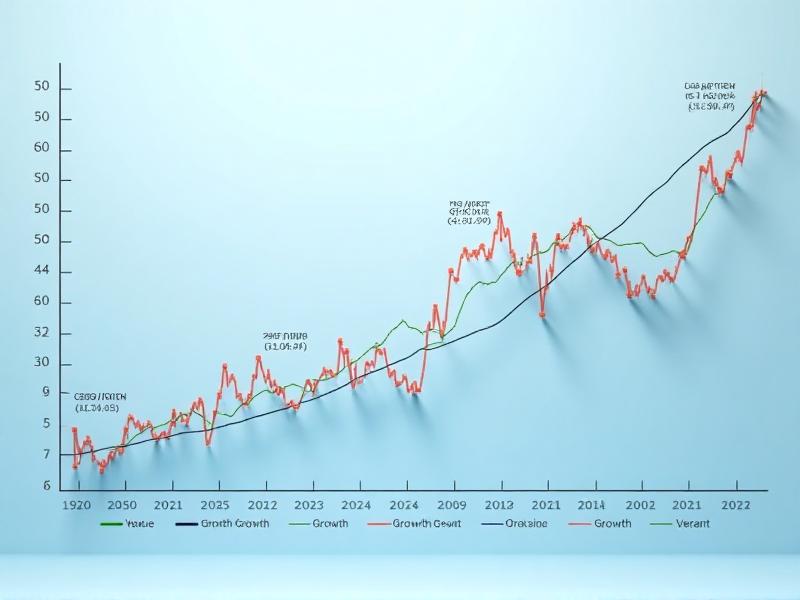
The Role of AI in Financial Planning

How to Invest in Bonds for Stability and Income

How to Choose the Right Hostel: 6 Tips to Avoid Bad Stays

How to Invest in Real Estate Without Buying Property
The Role of Research in Making Informed Investments
Apr 24, 2025 By Juliana Daniel
The Importance of Research in Investment Decisions
Investing is often compared to navigating a vast, unpredictable ocean. Without a compass or a map, the journey can be perilous. Research serves as that essential guide, helping investors make informed decisions based on data, trends, and analysis rather than gut feelings or speculation. In today’s fast-paced financial markets, where information is abundant but not always reliable, thorough research is the cornerstone of successful investing.
Research allows investors to understand the fundamentals of an asset, assess its potential risks and rewards, and align their choices with their financial goals. Whether it’s analyzing a company’s financial statements, evaluating market trends, or studying macroeconomic factors, research provides the clarity needed to navigate the complexities of the investment landscape. It empowers investors to make decisions with confidence, reducing the likelihood of costly mistakes.
Understanding the Types of Investment Research
Investment research can be broadly categorized into two types: fundamental analysis and technical analysis. Fundamental analysis focuses on evaluating the intrinsic value of an asset by examining financial statements, industry trends, and economic indicators. This approach is particularly useful for long-term investors who seek to identify undervalued assets with strong growth potential.
On the other hand, technical analysis involves studying price movements and trading volumes to predict future market behavior. This method is often favored by short-term traders who aim to capitalize on market volatility. Both types of research have their merits, and many investors combine them to gain a comprehensive understanding of the market. The key is to choose the approach that aligns with your investment strategy and goals.
The Role of Data and Technology in Modern Investment Research
In the digital age, the volume of data available to investors is staggering. From real-time market updates to social media sentiment analysis, technology has revolutionized the way research is conducted. Advanced tools like artificial intelligence and machine learning are now being used to process vast amounts of information, identify patterns, and generate actionable insights.
For instance, algorithmic trading relies on complex algorithms to execute trades at lightning speed based on predefined criteria. Similarly, robo-advisors use data-driven models to create personalized investment portfolios for users. While these technologies offer unprecedented convenience and efficiency, they also underscore the importance of human judgment. Investors must remain vigilant and critically evaluate the insights generated by these tools to ensure they align with their objectives.
Common Pitfalls to Avoid in Investment Research
While research is a powerful tool, it is not without its challenges. One common mistake is confirmation bias, where investors seek out information that supports their preconceived notions while ignoring contradictory evidence. This can lead to skewed decision-making and poor investment outcomes. To mitigate this, it’s essential to approach research with an open mind and consider multiple perspectives.
Another pitfall is over-reliance on historical data. While past performance can provide valuable insights, it is not always indicative of future results. Markets are influenced by a myriad of factors, including geopolitical events, technological advancements, and shifts in consumer behavior. Investors must balance historical analysis with forward-looking research to stay ahead of the curve.
Building a Research-Driven Investment Strategy
Creating a research-driven investment strategy involves several key steps. First, define your financial goals and risk tolerance. This will help you determine the types of assets to focus on and the level of research required. Next, identify reliable sources of information, such as reputable financial news outlets, industry reports, and academic studies. Diversify your sources to gain a well-rounded perspective.
Once you’ve gathered the necessary data, analyze it systematically. Look for trends, patterns, and anomalies that could impact your investment decisions. Finally, document your findings and use them to inform your strategy. Regularly review and update your research to adapt to changing market conditions. By taking a disciplined and methodical approach, you can build a robust investment strategy that stands the test of time.
The Ethical Considerations in Investment Research
Ethics play a crucial role in investment research. Investors must ensure that the information they use is obtained through legal and transparent means. Insider trading, for example, is a serious ethical violation that can lead to severe legal consequences. Additionally, investors should be mindful of the impact their decisions have on society and the environment.
Responsible investing, which considers environmental, social, and governance (ESG) factors, is gaining traction as more investors recognize the importance of sustainability. By incorporating ethical considerations into their research, investors can align their portfolios with their values while contributing to positive change. Ultimately, ethical research not only protects investors from legal and reputational risks but also fosters trust and credibility in the financial markets.
Conclusion: The Path to Informed Investing
Informed investing is not about predicting the future with certainty but about making well-researched decisions that maximize the chances of success. Research provides the foundation for understanding the complexities of the market, identifying opportunities, and managing risks. By embracing a disciplined and ethical approach to research, investors can navigate the ever-changing financial landscape with confidence and clarity.

The Pros and Cons of Digital Banking

Emergency Funds 101: Why and How to Build One

How to Invest in Value Stocks for Long-Term Gains

Discovering the Charm of Deià: A Travel Guide to Mallorca’s Hidden Gem

The Role of Artificial Intelligence in Portfolio Management

Unforgettable Pilgrimages: Top Temples in Andhra Pradesh

The Role of Financial Planning in Career Transitions

How to Use Budgeting Apps to Manage Your Money
Advertisement
